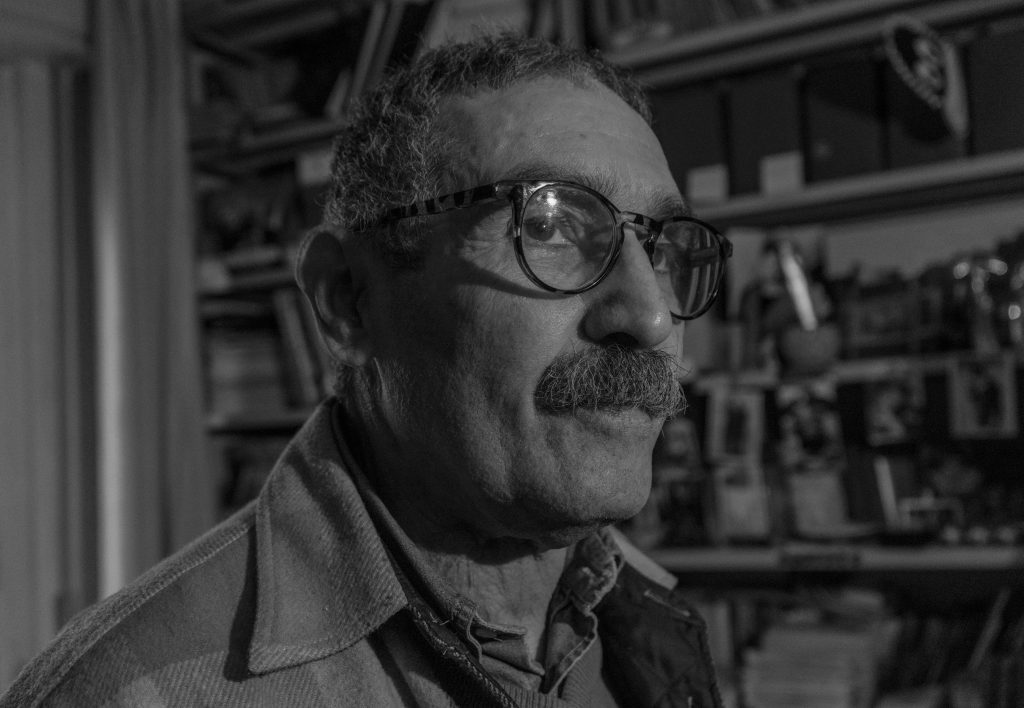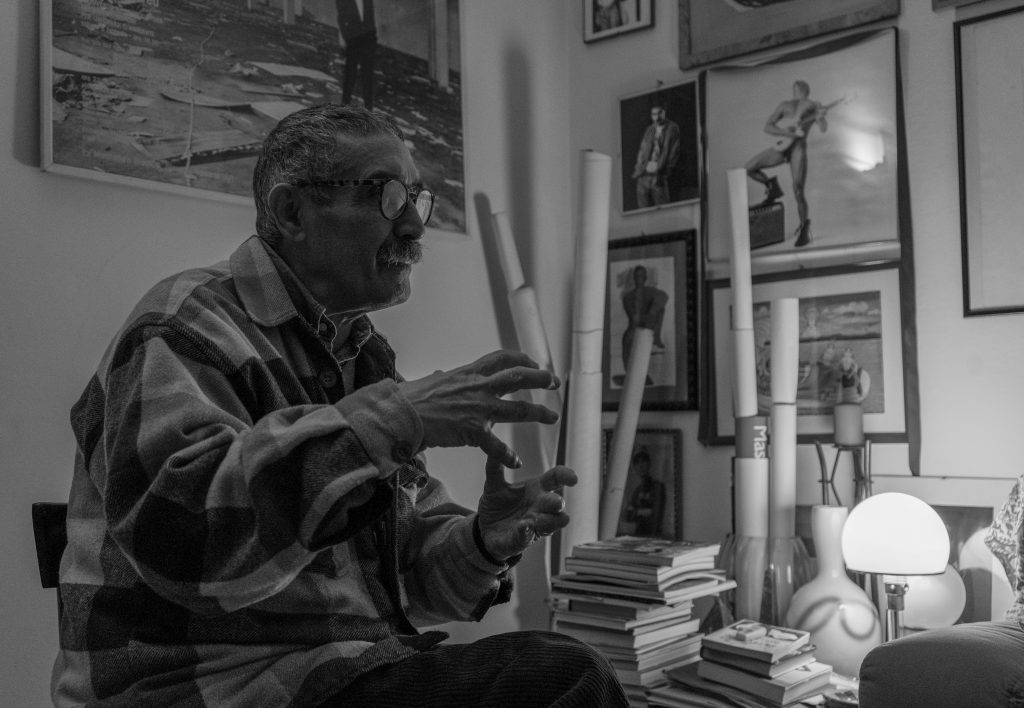Students and locals gather at Palazzi Community Center for a heartfelt presentation of sensibile alle minuscole.

Bruno Casini talks Westuff and the lasting impact of Florence’s 1980s Renaissance
Tracing the iconic Florence magazine from its humble beginnings.
For the upcoming Blending Magazine, the style and design throughout, take inspiration from the 1980s Florentine magazine ‘Westuff.’ We spoke with Bruno Casini, one of the magazine's founders, to understand how the incredible project came to begin, and unfortunately end.
Sitting down across from Bruno Casini, in his eclectic apartment in Florence, he hands me a faded copy of the first prototype of Westuff Magazine. The room surrounding us is decorated with posters, books, VHS tapes, stacks of magazines, and various other bits and mementos collected by Casini throughout his life. Casini’s artful collection is a reflection of his cultural involvement in Florence throughout the 1980s.
Westuff was a culture, art, and fashion magazine originating in Florence that began, quite humbly, as a zine. A zine is an unofficial, self-published magazine produced in small quantities. Casini was one of less than a dozen people that created the Westuff zine, which arose during an especially revolutionary time in the Florence art scene. The underground was blossoming; “there was this energy there … it was like, let's go,” Casini says.
After creating and circulating just a single edition of the zine, the publication caught the attention of the fashion house Luisa via Roma. They clearly saw potential in the zine’s aesthetic choices and within a few months of its creation, Westuff began official publication through the house. Producing the magazine from 1984-1988, Casini adds that the house didn’t take away any of their creative control and really let them explore and create as they wanted. Once the fire of Westuff started, it couldn’t be extinguished. Casini compares the era to a bustling train station. “No, let me say, we were really crazy. Crazy people. A train would leave every five minutes. When something would happen, a train would take off… it was unstoppable,” says Casini.
Flipping through the pages of the original magazine, Casini jumps into Westuff’s next big venture, Pitti Trend. After seeing the successful underground, yet editorial Westuff, Pitti Uomo began a biannual publication featuring music, book-readings, theater, and events in the city; if it was culturally relevant, Pitti Trend would showcase it. During this time, Casini refers to Florence as a bustling city, “a small San Francisco.” He also adds, “it was really a city on fire so much so that we did many things”
During this moment, Casini was about as busy as the shelves in his colorful apartment. “Pitti Trend was very special because it encompassed not necessarily just fashion,” says Casini. Pitti Trend involved clothes, books, presentations, and club events. At this time of immense growth and attention the magazine began to gain an international following. “The funny thing is that it was written both in English and Italian, but the irony is that they were selling more of these abroad than they were in Italy. The magazine was in Paris, London, New York, and Barcelona and it was a magazine that worked more outside of Italy,” explains Casini.
This international appeal of Westuff was somewhat by design according to Casini, “We wanted a magazine that spoke a language and had a communication, a bit like the other international magazines.” Casini expands upon the origin of the name of Westuff, explaining that it refers to, quite literally, the things of the west. “We were interested in the philosophy of a magazine, and this look on the Western world to verify, capture, and absorb all these things that had not yet exploded [in Italy] that could explode their scope here,” Casini adds.
Westuff was finding footing with its international audience and producing at an inspiring rate. Casini says the energy that was in the air at Westuff was immense and explains the process of story production at this time, “Work non-stop. Photos, stories, graphics, and then they would publish it… they had this drive, this spirit.”
Unfortunately for the members of the Westuff project, all good things must come to an end. While the magazine had a fan base, and was producing consistently with its unique spirit, the house that produced it was struggling to fund the project. “It end[ed] because the fashion center [told] us that they [didn't] have any more economic energy,” says Casini. Westuff lost its support in 1988, after four years of being a groundbreaking art and culture project for Italy.
While Westuff was dropped by their producer in 1988, Casini had an opportunity to try and save the magazine. “I had this dear friend who worked with Giorgio Armani… and he tells me, look, I know Westuff is over, Rosanna Armani wants to do a magazine, meet them. We go to Milan, and we go to Emporio Armani Magazine, and the first issue of Emporio Armani Magazine is a supplement to Westuff,” Casini recounts. The opportunity appeared fruitful, however it didn’t last long. After just a short time, Casini and his team, including all the graphic designers that made Westuff what it was, were removed from the project. Emporio Armani Magazine itself quit production not too much later.
The Westuff magazine project is an important story of energy and ambition during the era of Florence’s underground art movement. The magazine captured international attention with its distinctive design language and put a spotlight on the culture of Italy. Bruno Casini has a catalogue containing every version of Westuff to exist, and after flipping through it and handing it back to him I see truly how revolutionary this project was and what impact it has made on the underground art and culture scene of Florence, Italy.


Latest news
From Farm to Fork: Rethinking Food Systems in Florence
Students at AUF are uncovering the hidden impacts of the global food system and discovering what it means to eat sustainably.
The Terrarium: How to Build and Maintain It
Tiziano Codiferro’s terrarium master class provides an insight into how to start your own small scale garden.
